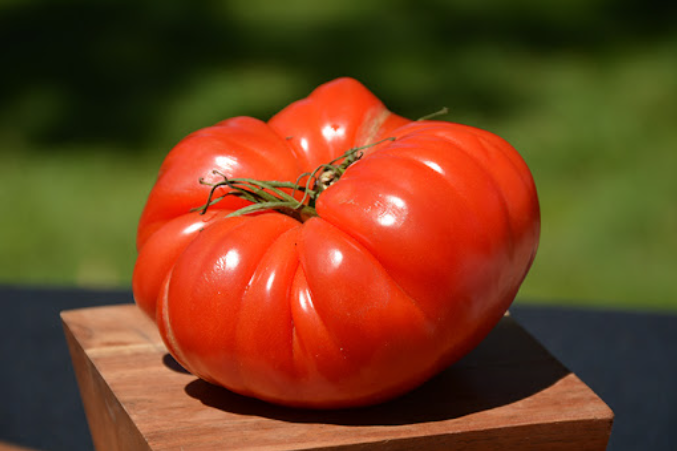Introduction to Johnson Tomatoes
If you’re looking to add a burst of flavor and vibrant color to your garden, then growing German Johnson tomato should be on your radar. These heirloom beauties are not just another variety; they bring a unique taste and rich history that can elevate any homegrown meal. Known for their large, juicy fruits with few seeds, German Johnson tomato are perfect for everything from fresh salads to hearty sauces. Plus, mastering the art of growing these delicious gems is easier than you might think! Whether you have a sprawling backyard or a cozy balcony, this beginner’s guide will walk you through all the essential steps. Let’s dig in and discover how to cultivate your own thriving crop of Johnson tomatoes!
Benefits of Growing Johnson Tomatoes
Growing Johnson tomatoes brings a bounty of benefits to your garden. These heirloom varieties are known for their rich flavor and impressive size, making them a favorite among tomato enthusiasts.
They thrive in various climates and soil types, allowing gardeners to enjoy success even in less-than-ideal conditions. Plus, they’re relatively disease-resistant, which means fewer worries about pests or plant health.
Another advantage is the high yield these plants offer. You can harvest an abundance of juicy fruits throughout the growing season. This makes them perfect for preserving or sharing with friends and family.
On top of that, cultivating Johnson tomatoes supports biodiversity. By choosing heirloom varieties like these, you help maintain genetic diversity in our food systems while enjoying the delightful experience of home gardening.
Choosing the Right Location and Soil for Your Johnson Tomatoes
Picking the perfect spot for your German Johnson tomatoes is crucial. They thrive in full sunlight, so aim for at least six to eight hours of direct sun daily. A sunny corner of your garden or a south-facing patio works wonders.
Next, consider the soil. Johnson tomatoes prefer well-draining soil rich in organic matter. A mix of loamy and sandy soils can create an ideal environment. You might want to test your soil pH; it should range between 6.0 and 6.8 for optimal growth.
Amending the soil with compost not only improves its structure but also boosts nutrients essential for healthy plants. If you have heavy clay or compacted earth, raised beds could offer a solution, allowing better drainage and easier maintenance.
Choose a location that allows good air circulation as well—it helps prevent diseases while ensuring robust growth throughout the season.
Planting and Caring for Johnson Tomatoes
Planting Johnson tomatoes requires careful attention to timing and technique. Start seeds indoors about six to eight weeks before the last frost date in your area. Use a seed-starting mix for optimal drainage and nutrient retention.
Once seedlings are around six inches tall, it’s time to transfer them outdoors. Choose a sunny spot with at least six hours of direct sunlight each day. Ensure the soil is rich in organic matter, ideally amended with compost.
When planting, dig holes deep enough so that two-thirds of the stem is buried. This helps develop a strong root system. Space plants about 24 inches apart to allow ample airflow.
Regular watering is crucial, but avoid over-saturating the soil. Aim for consistent moisture without puddling. As they grow, consider staking or caging your plants for support, allowing fruits to thrive without touching the ground.
Fertilize every few weeks using a balanced fertilizer designed for vegetables; this boosts growth and fruit production effectively.
Tips for Maximizing Growth and Yield
To maximize the growth and yield of your German Johnson tomato, start with proper spacing. Give each plant enough room to breathe. Crowded plants can compete for nutrients and sunlight.
Regular watering is crucial. Aim for consistent moisture, especially during hot weather. Drip irrigation works wonders in keeping the soil evenly moist without drowning the roots.
Fertilization is essential as well. Use a balanced fertilizer to provide necessary nutrients throughout the growing season. Consider organic options like compost or well-rotted manure for added benefits.
Pruning your tomato plants can also boost production. Remove suckers that grow between the main stem and branches to encourage stronger fruit development.
Keep an eye out for pests and diseases. Early detection allows you to take action before they wreak havoc on your harvest. Healthy practices lead to thriving plants filled with delicious tomatoes!
Troubleshooting Common Issues with Johnson Tomatoes
Growing German Johnson tomato can be rewarding, but challenges may arise.
One common issue is blossom end rot. This occurs when the bottom of the fruit develops a dark, sunken spot. It’s often due to inconsistent watering or calcium deficiency in the soil. Ensure consistent moisture and consider adding lime to your soil for calcium.
Another problem could be yellowing leaves. This might indicate nutrient deficiencies or pests like aphids and spider mites. Inspect your plants regularly; adjusting fertilization or introducing beneficial insects can help.
Watch out for wilting plants as well. Overwatering can suffocate roots, while underwatering stresses them too much. Check the soil’s moisture level before deciding on watering routines.
Cracked skin on ripe tomatoes usually signals fluctuating water levels during growth periods. Maintain steady irrigation practices to avoid this unsightly condition and keep those fruits looking perfect!
Creative Ways to Use Johnson Tomatoes in Recipes
Johnson tomatoes shine in a variety of dishes. Their sweet, juicy flesh makes them perfect for fresh salads. Toss diced Johnson tomatoes with cucumbers, red onions, and a drizzle of olive oil for a refreshing summer side.
For heartier meals, consider roasting them. Halve the tomatoes and sprinkle with herbs like basil or thyme before drizzling with balsamic vinegar. Roast until caramelized to enhance their natural sweetness.
You can also savor their flavor in sauces. Cook down chopped Johnson tomatoes with garlic and onions for a rich marinara that will elevate any pasta dish.
Don’t overlook sandwiches! Layer slices of Johnson tomato on your favorite bread with mozzarella and fresh basil for an Italian classic Caprese sandwich.
These versatile fruits offer endless possibilities; let your creativity flow as you explore new recipes that highlight their delightful taste!
Conclusion
Growing German Johnson tomato can be a rewarding journey for any gardener, regardless of experience level. From selecting the right location and soil to understanding how to care for these delicious fruits, every step is filled with opportunities to learn and grow alongside your plants. Embrace the process and don’t shy away from experimenting with various techniques to find what works best in your garden.
As you harvest those vibrant, juicy tomatoes, you’ll appreciate not only their unique flavor but also the effort you’ve put into nurturing them. With some patience and practice, you’ll soon enjoy an abundant yield that enhances your meals in countless ways. So roll up your sleeves, get planting, and let the joy of growing German Johnson tomatoes enrich both your garden and kitchen!




















